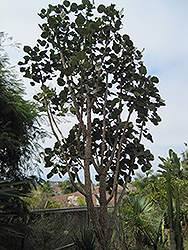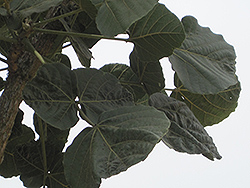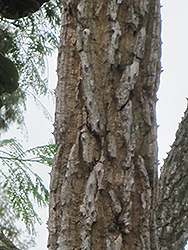Fri & Sat 8am - 8pm
Sun 8am - 7pm
Anytown, USA 12345
fax: 261.787.0463
e-mail: info@successgc.com


Plant Finder

Height: 25 feet
Spread: 20 feet
Sunlight:
![]()
Hardiness Zone: 9b
Other Names: Coral Bean Tree
Description:
A medium sized, sturdy deciduous tree with an upright habit, featuring thick, corky bark and huge, leathery dark green leaves; dazzling scarlet-red flower clusters appear before the leaves in late winter; a great specimen tree on the landscape
Ornamental Features
Broad-leaved Coral Tree features showy clusters of scarlet tubular flowers with red overtones at the ends of the branches from late winter to early spring before the leaves. It has attractive dark green deciduous foliage. The large crinkled heart-shaped leaves are highly ornamental but do not develop any appreciable fall color. The fruits are showy dark brown pods displayed in early fall. The fruit can be messy if allowed to drop on the lawn or walkways, and may require occasional clean-up. The furrowed tan bark is extremely showy and adds significant winter interest.
Landscape Attributes
Broad-leaved Coral Tree is a multi-stemmed deciduous tree with an upright spreading habit of growth. Its relatively coarse texture can be used to stand it apart from other landscape plants with finer foliage.
This is a relatively low maintenance tree, and should only be pruned after flowering to avoid removing any of the current season's flowers. It is a good choice for attracting bees, butterflies and hummingbirds to your yard. Gardeners should be aware of the following characteristic(s) that may warrant special consideration;
- Spiny
Broad-leaved Coral Tree is recommended for the following landscape applications;
- Accent
- Shade
- Container Planting
Planting & Growing
Broad-leaved Coral Tree will grow to be about 25 feet tall at maturity, with a spread of 20 feet. It has a low canopy with a typical clearance of 3 feet from the ground, and should not be planted underneath power lines. It grows at a slow rate, and under ideal conditions can be expected to live to a ripe old age of 100 years or more; think of this as a heritage tree for future generations!
This tree should only be grown in full sunlight. It prefers dry to average moisture levels with very well-drained soil, and will often die in standing water. It is considered to be drought-tolerant, and thus makes an ideal choice for xeriscaping or the moisture-conserving landscape. This plant should not require much in the way of fertilizing once established, although it may appreciate a shot of general-purpose fertilizer from time to time early in the growing season. It is not particular as to soil pH, but grows best in sandy soils, and is able to handle environmental salt. It is somewhat tolerant of urban pollution. Consider applying a thick mulch around the root zone in winter to protect it in exposed locations or colder microclimates. This species is not originally from North America, and parts of it are known to be toxic to humans and animals, so care should be exercised in planting it around children and pets.
Broad-leaved Coral Tree is a fine choice for the yard, but it is also a good selection for planting in outdoor pots and containers. Its large size and upright habit of growth lend it for use as a solitary accent, or in a composition surrounded by smaller plants around the base and those that spill over the edges. It is even sizeable enough that it can be grown alone in a suitable container. Note that when grown in a container, it may not perform exactly as indicated on the tag - this is to be expected. Also note that when growing plants in outdoor containers and baskets, they may require more frequent waterings than they would in the yard or garden.


